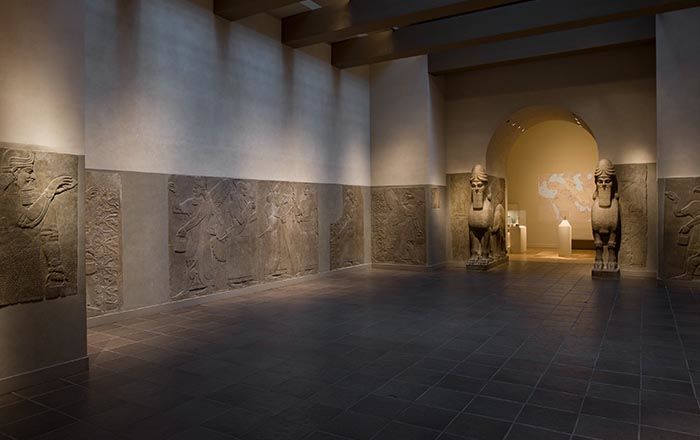Bowl
Not on view
About one third of this ceramic bowl is preserved. The bowl is conical and sits on a ring base. It is made of a buff clay with a thick cream slip. The rim and base are decorated with black stripes, and a row of oval dots and a pendant tree motif are on the interior.
The bowl was excavated at Tall-i Nokhodi, a prehistoric site in southwestern Iran occupied during the fourth and third millennia B.C. Excavations have been limited in scope, but the presence of ovens there suggest it was a small settlement. Metal finds from the site, including a cast bronze axe head, indicate a precious metalworking industry there, one which prefigures the magnificent and extensive bronzeworking of the neighboring Elamites in centuries to come.
This bowl was excavated in 1962 by the British Institute of Persian Studies. However, the Met acquired it in 1978 as a result of its financial contributions to the Institute’s excavations at Tepe Nush-i Jan, another site in Iran. At the time the Iranian government allowed foreign excavators to keep a portion of the finds, and these excavators in turn would divide their share among the institutions that supported the work.
This image cannot be enlarged, viewed at full screen, or downloaded.

